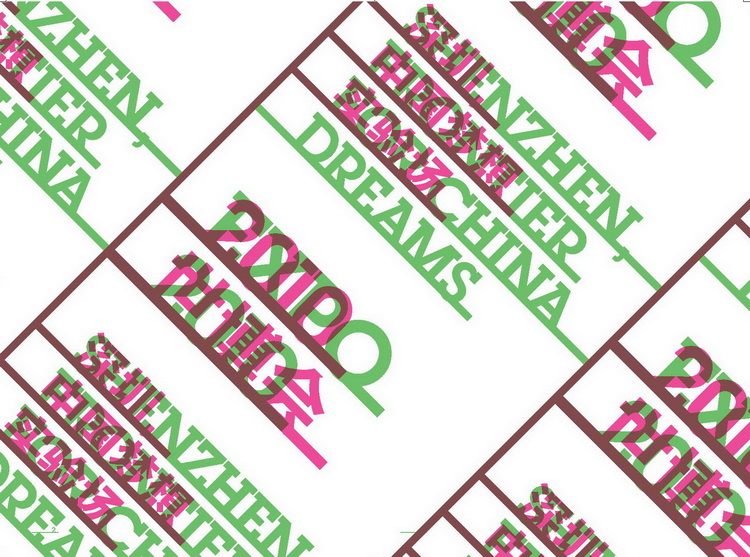
Expo 2010 Shanghai China Urban Best Practices Area Shenzhen Case Pavilion Booklet
MENG Yan/Chief curator
It has been nearly one and a half centuries since the inception of The World Exposition in 1851. Amid this era of information explosion, the sumptuous feast offered by World Exposition is increasingly being watered down and turning more into fast-food pressed by overwhelming information and rapidly changing commercial needs. Will the Shenzhen Pavilion break this trend towards short-lived, sensory stimulus, go beyond the flamboyance of a “sea of exhibits”, create higher added value while presenting sensational scenes and provoke more long-lasting profound and cultural thinking? The Shenzhen pavilion should be more than a mere exhibition: It is a major cultural event for the entire city.
The World Exposition has played a significant role in showcasing the economic development, scientific and technological progress and cultural trends of countries. It is now a scientific and cultural gathering place where major economies at both city and state levels join together, conceive the collective future of humanity and transmit this picture through the window of exposition. While people are making unrelenting efforts to create technological and cultural miracles, the sumptuous feast offered by World Exposition is increasingly being watered down and turning more into fast food pressed by overwhelming information and rapidly changing commercial needs. The myriad of gorgeous pavilions resulting from a grand competition characterized by information bombardment, can hardly sustain nor can it provoke genuinely valuable academic discussion. Will the Shenzhen Pavilion break this trend towards short-lived sensory stimulus, go beyond the grandeur of a “sea of exhibits”, create a higher value while presenting sensational scenes and provoke more profound cultural thinking with long-lasting effects?
The theme of the 2010 Shanghai World Exposition is: “Better city, better life”, which is in harmony with the rhythm of China’s rapid urbanization. The “Urban Best Practice” area, housing the Shenzhen pavilion is a unique exhibition space representing the future-oriented vision of the Shanghai World Expo. It closely tracks how major cities around the globe are coping with new problems arising from their urbanization processes, as well as their effective and creative solutions, making it is a highly specialized exhibition space.
The Shenzhen pavilion used the regeneration of Dafen village, a village-in-the-city as the story line, successfully avoiding the panoramic narration of an all-encompassing history of its success. Instead, it has explored a new path in terms of theme selection and form of presentation. Moreover, it tries to avoid epic-like presentations and empty talks. Instead, it proceeds from a specific case: the development and regeneration of Dafen village, and tells a story about how people as the ultimate driver of all the miracles created over the past thirty years, have shaped the drastic changes of this young city. It is a story about people, their dreams and creativity, as well as the culture, spirit and vision of this city.
The transformation of Dafen from a village to city is edifying and the interpretation of the story requires in-depth analysis. The exhibition seeks to reproduce the life and dreams of Shenzhen people by exploring subjects such as how oil painting in the village gradually formed its industry chain here, how the village reshaped itself, and so forth. In this sense, Dafen village serves as an excellent example of our efforts to understand modern cities. Meanwhile, it is our wish to demonstrate the unceasing creativity of Shenzhen as a “city of design” by hosting the Shenzhen pavilion. We hope that its influence can go far beyond the six month timeframe and the 390 square meter space constraint. With Dafen village emanating its charms concurrently as the exhibition proceeds, we hope the “twin exhibition” arrangement can evoke even more wonderful stories and unleash more of the vigor and vitality of this land.
Positioning: We chose “Shenzhen experience/Global issues”, “Experimentation /Frontier Culture”, “Contemporaneity/ Continuity” as the three main guidelines defining the basic position and academic stance of this exhibition. We proceed from a globalized prospective and humanistic viewpoint, seeking to engage in and drive China’s modern urbanization. Based on in-depth analysis of the regeneration of Dafen village, we try to provoke people’s diverse thoughts on this issue, and hope to promote discussions in a global perspective.
